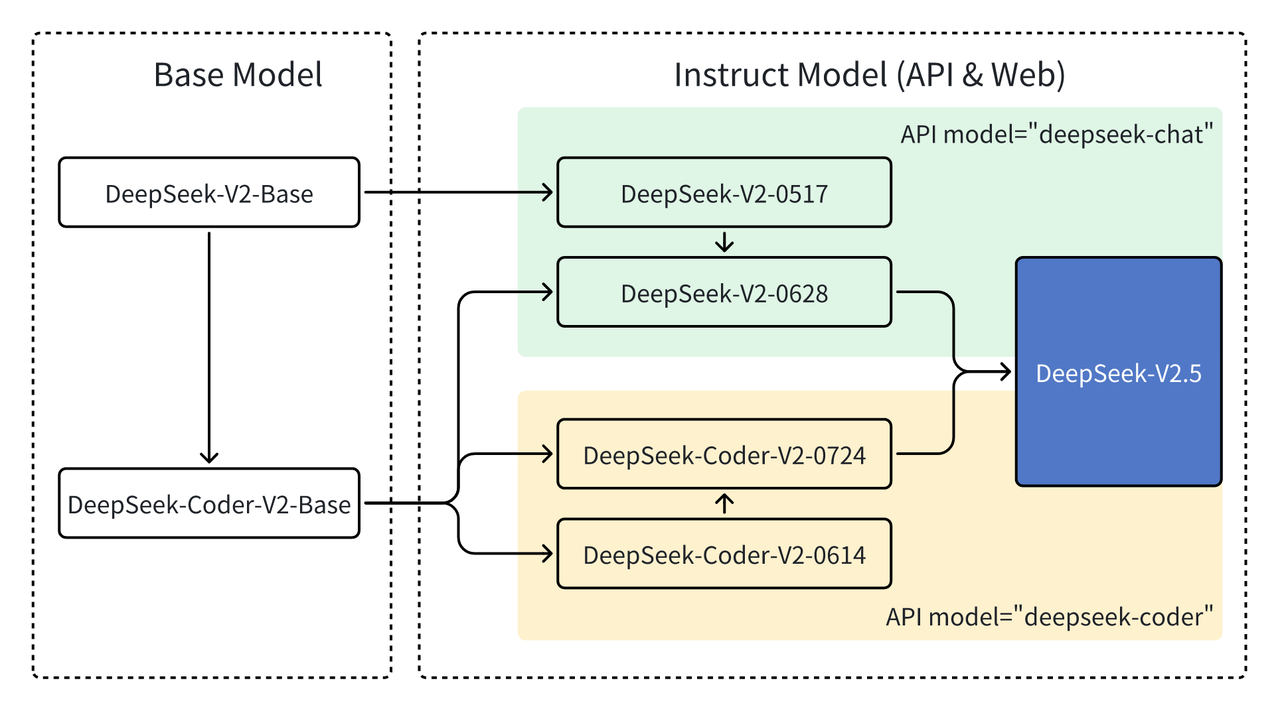We have actually been tracking the explosive rise of DeepSeek R1, which has actually taken the AI world by storm in current weeks. In this session, we dove deep into the evolution of the DeepSeek family - from the early designs through DeepSeek V3 to the breakthrough R1. We likewise explored the technical innovations that make R1 so unique worldwide of open-source AI.
The DeepSeek Family Tree: From V3 to R1

DeepSeek isn't just a single design; it's a family of progressively advanced AI systems. The development goes something like this:
DeepSeek V2:
This was the foundation design which leveraged a mixture-of-experts architecture, where only a subset of experts are used at reasoning, considerably enhancing the processing time for each token. It likewise included multi-head hidden attention to decrease memory footprint.
DeepSeek V3:
This model introduced FP8 training techniques, which assisted drive down training costs by over 42.5% compared to previous versions. FP8 is a less precise way to store weights inside the LLMs but can considerably enhance the memory footprint. However, training using FP8 can normally be unstable, and it is difficult to obtain the wanted training results. Nevertheless, DeepSeek utilizes numerous techniques and attains remarkably stable FP8 training. V3 set the phase as a highly efficient model that was already cost-efficient (with claims of being 90% cheaper than some closed-source options).
DeepSeek R1-Zero:
With V3 as the base, the team then introduced R1-Zero, the first reasoning-focused version. Here, the focus was on teaching the model not simply to produce answers but to "think" before responding to. Using pure reinforcement knowing, the model was motivated to produce intermediate thinking actions, for instance, taking extra time (typically 17+ seconds) to overcome an easy issue like "1 +1."
The key development here was the usage of group relative policy optimization (GROP). Instead of counting on a standard process reward model (which would have required annotating every step of the thinking), GROP compares multiple outputs from the model. By sampling a number of possible answers and scoring them (using rule-based steps like precise match for mathematics or validating code outputs), the system discovers to prefer reasoning that leads to the proper outcome without the need for explicit supervision of every intermediate idea.
DeepSeek R1:
Recognizing that R1-Zero's without supervision method produced reasoning outputs that could be hard to check out or even blend languages, the designers returned to the drawing board. They used the raw outputs from R1-Zero to create "cold start" information and then manually curated these examples to filter and enhance the quality of the thinking. This human post-processing was then used to tweak the initial DeepSeek V3 model further-combining both reasoning-oriented support learning and supervised fine-tuning. The result is DeepSeek R1: a design that now produces readable, coherent, and trustworthy reasoning while still maintaining the effectiveness and cost-effectiveness of its predecessors.
What Makes R1 Series Special?
The most remarkable aspect of R1 (no) is how it developed thinking capabilities without specific guidance of the thinking process. It can be further enhanced by using cold-start data and supervised support discovering to produce understandable reasoning on general tasks. Here's what sets it apart:
Open Source & Efficiency:
R1 is open source, permitting scientists and designers to check and construct upon its innovations. Its cost efficiency is a major selling point particularly when compared to closed-source models (claimed 90% more affordable than OpenAI) that need massive calculate budgets.
Novel Training Approach:
Instead of relying solely on annotated thinking (which is both pricey and lengthy), the model was trained utilizing an outcome-based technique. It started with quickly proven tasks, such as mathematics problems and coding exercises, where the correctness of the final response could be quickly measured.
By utilizing group relative policy optimization, the training process compares multiple created responses to determine which ones meet the wanted output. This relative scoring mechanism enables the model to find out "how to think" even when intermediate reasoning is produced in a freestyle way.
Overthinking?
An intriguing observation is that DeepSeek R1 sometimes "overthinks" simple problems. For instance, when asked "What is 1 +1?" it might invest almost 17 seconds evaluating different scenarios-even considering binary representations-before concluding with the proper response. This self-questioning and confirmation process, although it might appear ineffective at first look, might prove useful in intricate tasks where deeper thinking is needed.
Prompt Engineering:
Traditional few-shot triggering methods, which have worked well for numerous chat-based designs, can in fact degrade performance with R1. The developers recommend using direct problem statements with a zero-shot technique that specifies the output format plainly. This makes sure that the design isn't led astray by extraneous examples or tips that might disrupt its internal reasoning procedure.
Getting Going with R1
For those aiming to experiment:
Smaller variants (7B-8B) can operate on customer GPUs or even only CPUs
Larger variations (600B) need substantial compute resources
Available through significant cloud service providers
Can be deployed locally through Ollama or vLLM
Looking Ahead
We're particularly captivated by numerous ramifications:
The capacity for this method to be used to other thinking domains
Influence on agent-based AI systems traditionally developed on chat designs
Possibilities for integrating with other supervision techniques
Implications for enterprise AI implementation
Thanks for reading Deep Random Thoughts! Subscribe free of charge to get brand-new posts and support my work.
Open Questions
How will this impact the development of future reasoning models?
Can this approach be reached less verifiable domains?
What are the implications for multi-modal AI systems?
We'll be enjoying these advancements closely, especially as the neighborhood begins to experiment with and construct upon these strategies.
Resources
Join our Slack neighborhood for ongoing discussions and updates about DeepSeek and other AI developments. We're seeing fascinating applications already emerging from our bootcamp participants working with these designs.
Chat with DeepSeek:
https://www.deepseek.com/
Papers:
DeepSeek LLM
DeepSeek-V2
DeepSeek-V3
DeepSeek-R1
Blog Posts:
The Illustrated DeepSeek-R1
DeepSeek-R1 Paper Explained
DeepSeek R1 - a brief summary
Cloud Providers:
Nvidia
Together.ai
AWS
Q&A
Q1: Which design is worthy of more attention - DeepSeek or Qwen2.5 Max?
A: While Qwen2.5 is also a strong model in the open-source community, the choice eventually depends on your use case. DeepSeek R1 emphasizes sophisticated thinking and a novel training approach that may be especially important in tasks where proven reasoning is important.
Q2: Why did significant service providers like OpenAI choose monitored fine-tuning instead of reinforcement learning (RL) like DeepSeek?
A: We should keep in mind in advance that they do use RL at least in the type of RLHF. It is most likely that designs from major companies that have thinking abilities already utilize something comparable to what DeepSeek has actually done here, however we can't make certain. It is also most likely that due to access to more resources, they preferred monitored fine-tuning due to its stability and the all set availability of large annotated datasets. Reinforcement learning, although powerful, can be less foreseeable and more difficult to manage. DeepSeek's technique innovates by using RL in a reasoning-oriented manner, allowing the design to learn effective internal reasoning with only minimal procedure annotation - a strategy that has proven appealing regardless of its intricacy.
Q3: Did DeepSeek utilize test-time calculate methods similar to those of OpenAI?
A: DeepSeek R1's style emphasizes effectiveness by leveraging methods such as the mixture-of-experts approach, which activates just a subset of specifications, to reduce calculate throughout inference. This focus on efficiency is main to its cost advantages.
Q4: What is the distinction between R1-Zero and R1?
A: R1-Zero is the preliminary model that discovers reasoning exclusively through support knowing without specific process guidance. It creates intermediate thinking actions that, while often raw or mixed in language, serve as the structure for knowing. DeepSeek R1, on the other hand, refines these outputs through human post-processing and supervised fine-tuning. In essence, R1-Zero offers the without supervision "spark," and R1 is the polished, more meaningful version.
Q5: How can one remain upgraded with thorough, technical research while handling a busy schedule?
A: Remaining present involves a combination of actively engaging with the research community (like AISC - see link to sign up with slack above), following preprint servers like arXiv, going to pertinent conferences and webinars, and taking part in discussion groups and newsletters. Continuous engagement with online neighborhoods and collaborative research tasks likewise plays an essential function in staying up to date with technical improvements.
Q6: In what use-cases does DeepSeek surpass models like O1?
A: The brief response is that it's too early to tell. DeepSeek R1's strength, nevertheless, depends on its robust reasoning abilities and its efficiency. It is particularly well suited for tasks that need proven logic-such as mathematical issue solving, code generation, and structured decision-making-where intermediate thinking can be evaluated and confirmed. Its open-source nature further permits tailored applications in research and enterprise settings.
Q7: What are the implications of DeepSeek R1 for business and start-ups?
A: The open-source and cost-effective design of DeepSeek R1 lowers the entry barrier for releasing innovative language models. Enterprises and start-ups can utilize its innovative thinking for agentic applications ranging from automated code generation and client support to information analysis. Its versatile deployment options-on customer hardware for smaller models or cloud platforms for bigger ones-make it an appealing alternative to exclusive services.

Q8: Will the model get stuck in a loop of "overthinking" if no appropriate response is found?
A: While DeepSeek R1 has actually been observed to "overthink" easy problems by checking out numerous thinking courses, it incorporates stopping requirements and assessment mechanisms to avoid limitless loops. The reinforcement finding out structure encourages convergence towards a proven output, even in uncertain cases.
Q9: Is DeepSeek V3 totally open source, and engel-und-waisen.de is it based on the Qwen architecture?
A: Yes, DeepSeek V3 is open source and functioned as the foundation for later iterations. It is constructed on its own set of innovations-including the mixture-of-experts technique and FP8 training-and is not based on the Qwen architecture. Its style emphasizes efficiency and cost reduction, setting the stage for the thinking developments seen in R1.
Q10: How does DeepSeek R1 carry out on vision jobs?
A: DeepSeek R1 is a text-based model and does not incorporate vision capabilities. Its style and training focus solely on language processing and reasoning.
Q11: Can specialists in specialized fields (for instance, labs dealing with remedies) use these approaches to train domain-specific designs?

A: Yes. The developments behind DeepSeek R1-such as its outcome-based thinking training and efficient architecture-can be adapted to numerous domains. Researchers in fields like biomedical sciences can tailor these techniques to develop designs that address their particular difficulties while gaining from lower calculate costs and robust thinking abilities. It is likely that in deeply specialized fields, nevertheless, there will still be a requirement for pediascape.science monitored fine-tuning to get reliable results.
Q12: Were the annotators for the human post-processing specialists in technical fields like computer science or mathematics?
A: The conversation indicated that the annotators mainly concentrated on domains where correctness is easily verifiable-such as mathematics and coding. This recommends that expertise in technical fields was certainly leveraged to guarantee the precision and clearness of the thinking data.
Q13: Could the model get things incorrect if it depends on its own outputs for learning?
A: While the design is developed to optimize for correct responses through support knowing, there is constantly a risk of errors-especially in uncertain scenarios. However, by examining numerous prospect outputs and strengthening those that lead to verifiable outcomes, the training procedure minimizes the possibility of propagating inaccurate reasoning.
Q14: How are hallucinations lessened in the model given its iterative thinking loops?
A: Using rule-based, verifiable jobs (such as mathematics and coding) helps anchor the design's reasoning. By comparing multiple outputs and using group relative policy optimization to strengthen just those that yield the correct result, the model is assisted far from producing unfounded or hallucinated details.
Q15: Does the design rely on complex vector mathematics?
A: Yes, advanced techniques-including complex vector math-are essential to the execution of mixture-of-experts and attention systems in DeepSeek R1. However, the main focus is on utilizing these methods to make it possible for efficient reasoning rather than showcasing mathematical intricacy for its own sake.
Q16: Some worry that the model's "thinking" might not be as improved as human thinking. Is that a valid concern?
A: Early models like R1-Zero did produce raw and sometimes hard-to-read reasoning. However, the subsequent improvement process-where human professionals curated and improved the reasoning data-has significantly enhanced the clarity and dependability of DeepSeek R1's internal idea process. While it remains a progressing system, iterative training and feedback have led to meaningful improvements.
Q17: Which design variants appropriate for regional release on a laptop with 32GB of RAM?
A: For local testing, a medium-sized model-typically in the series of 7B to 8B parameters-is recommended. Larger designs (for example, those with numerous billions of criteria) require significantly more computational resources and are much better suited for cloud-based deployment.
Q18: Is DeepSeek R1 "open source" or does it provide only open weights?

A: DeepSeek R1 is supplied with open weights, archmageriseswiki.com indicating that its model parameters are openly available. This aligns with the general open-source approach, enabling scientists and designers to further check out and build upon its innovations.
Q19: What would happen if the order of training were reversed-starting with monitored fine-tuning before without supervision reinforcement knowing?

A: The existing method allows the model to initially check out and produce its own thinking patterns through not being watched RL, and after that refine these patterns with monitored techniques. Reversing the order may constrain the model's ability to discover diverse thinking courses, potentially restricting its total efficiency in jobs that gain from self-governing idea.
Thanks for reading Deep Random Thoughts! Subscribe for complimentary to receive new posts and support my work.







